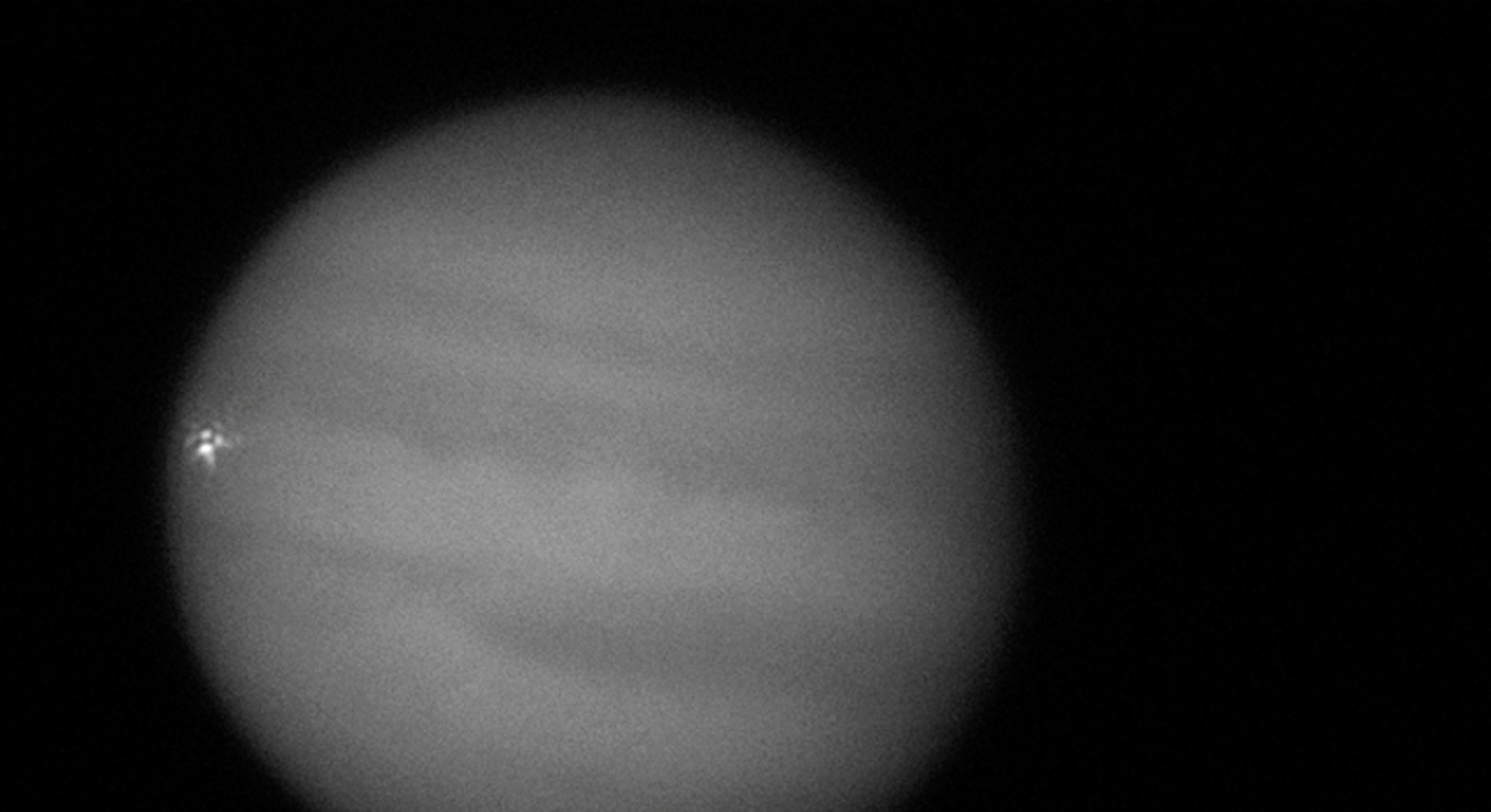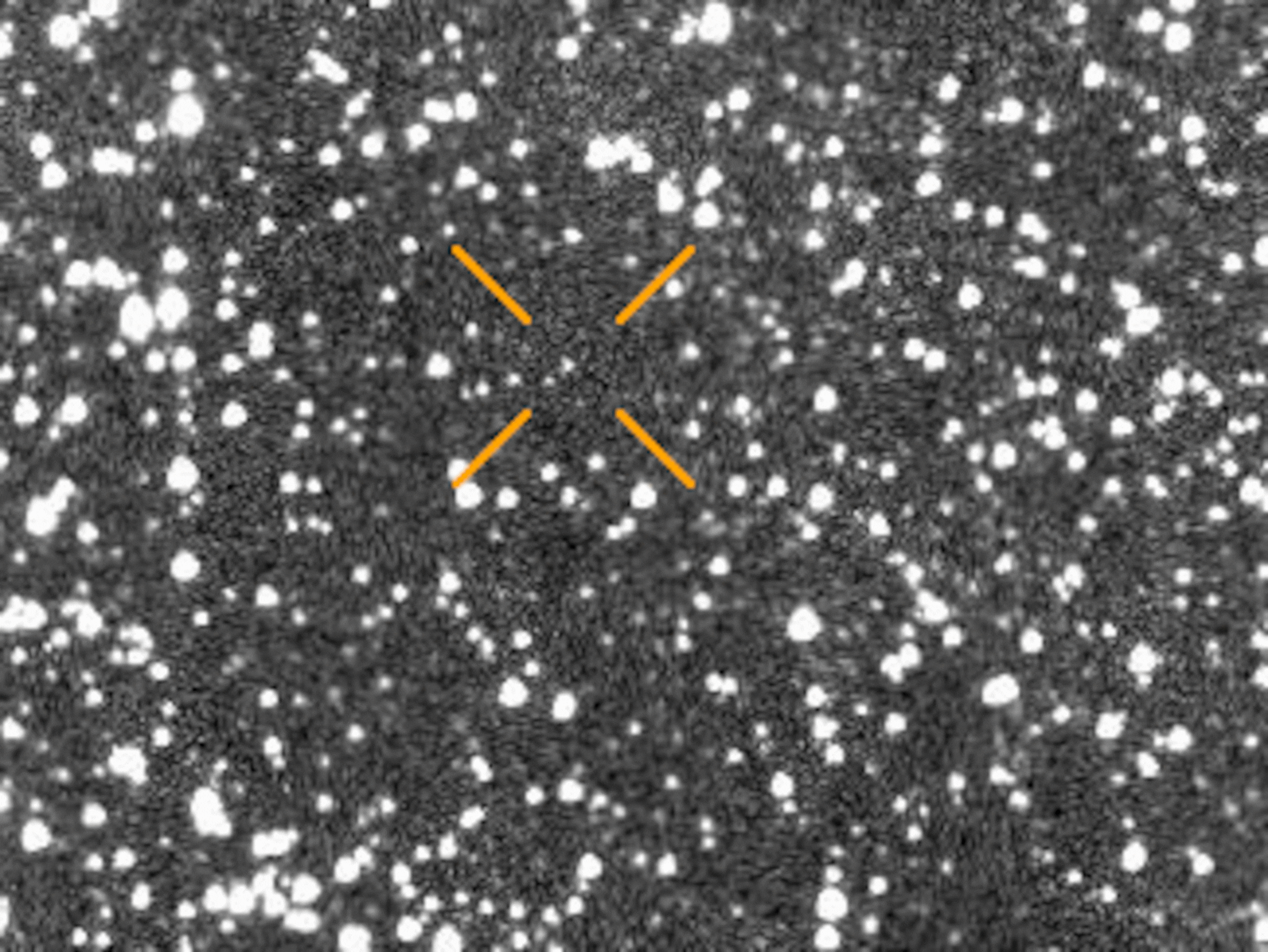
Jupiter Explosion Spotted by Amateur Astronomers
"I observed an explosion on Jupiter this morning!"
Early Monday morning U.S. amateur astronomers spotted a bright light squiggling across the upper cloud deck of Jupiter. Both assumed they'd witnessed a large meteor or comet impact, and so far, professional astronomers seem to agree.
NASA's Amy Simon Miller, though, cautioned that, "at this point, we can only confirm based on the fact that there were two independent reports." Official observations will have to wait.
Such a strike would be the fourth impact seen on Jupiter in just the last three years. And the fact that the explosion was visible via backyard telescopes more than 454 million miles (730 million kilometers) away—indicates it was probably a significant event.
"Although we don't yet know the size or exact nature of the impactor, based on the flash brightness we expect it is slightly bigger and energetic than the one seen in 2010, which was estimated to be on the order of 10 meters [33 feet] in size," said Miller, chief of the planetary systems laboratory at Goddard Spaceflight Center in Maryland. "By contrast, the impactor in 2009 was likely 200 to 500 meters [660 to 1,600 feet]."
(See "Bright Fireball Slams Into Jupiter" [June 2010] and "Jupiter Impact Creates Huge New Spot" [July 2009].)
Leaving a Mark on Jupiter?
Amateur astronomer Dan Peterson, in Racine, Wisconsin, watched the Jupiter impact live while peering through a 12-inch telescope. Later, his counterpart to the south—George Hall of Dallas, Texas—realized he'd accidentally caught the flash on video, thanks to a webcam-telescope link. (Watch the video of Monday's Jupiter impact.)
"My best guess is that it was a small undetected comet that is now history," wrote Peterson on a telescope message board post titled "I observed an explosion on Jupiter this morning!"
"Hopefully," he added, "it will sign its name on Jupiter's cloud tops."
Searching for that signature—dark markings on Jupiter's cloud tops—is exactly what astronomers should do next, NASA's Miller said. "An impact superheats the immediate atmosphere and will essentially produce soot," she said.
Only if such stains are spotted will heavy-duty telescopes be enlisted to confirm the Jupiter blast, she said. "Professional telescopes and Hubble are typically very oversubscribed and won't be called into action unless a debris field is confirmed first by amateurs."
(Related: "Third Jupiter Fireball Spotted—Sky-Watching Army Needed.")
Jupiter Impacts "Probably Quite Frequent"
Before the recent rash of Jovian collisions, it was thought that Jupiter impacts were rare cosmic events—with the 1994 death of comet Shoemaker-Levy 9 a spectacular exception. That impactor consisted of at least 21 fragments, some as wide as 1.3 miles (2 kilometers), according to NASA.
Now astronomers have begun to think the impacts are in fact fairly common.
On Jupiter "very small events are probably quite frequent," Miller said, though many would occur on the half of the planet we can't see. "In fact, they probably happen up to once a week, but some would be too small to even make a flash."
With more tech-savvy amateurs like Peterson and Hall monitoring Jupiter on a regular basis, she said, scientists hope to get a better grip on the number of meteors floating in Jupiter's vicinity—one grainy video at a time.
"The impacts in 2009 and then 2010 showed that there were very many smaller objects out near Jupiter with the potential to impact," Miller said.
"At that point we expected that many more sightings would occur," she added, "so this new one confirms our hypothesis."
More: How Jupiter may shield Earth from impacts >>





